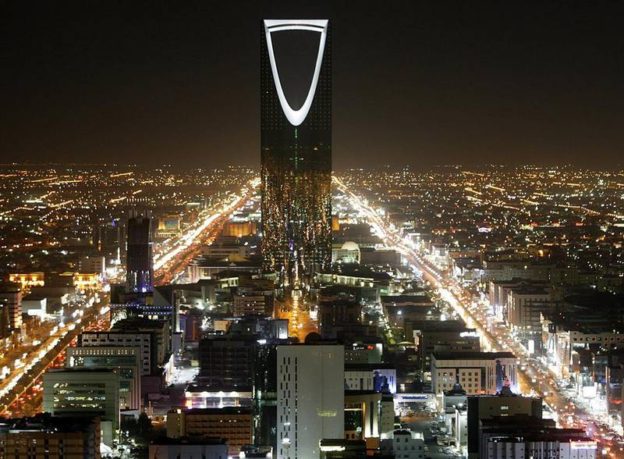Saudi welcomes the world
On World Tourism Day on Sept. 27, 2019, Saudi opened its doors to tourism and said welcome to the world; several years later, in 2022, the world is in Saudi.
In three short years, and despite a lengthy pandemic that closed borders across the globe, the Saudi tourism sector has evolved and transformed into a thriving, dynamic world-class industry.
With drive and ambition at the core of the transformation, the sector has been creating jobs, stimulating the economy, and spotlighting the depth and breadth of activities and experiences for travelers seeking rich culture, historical sites, natural wonders, entertainment, culinary delights, and traditional Saudi hospitality.
The Saudi tourism sector is fast becoming recognized by influential partners and stakeholders worldwide for its lightning-fast progress, first-class offerings, and capacity to surpass the growth of many of the world’s leading tourism destinations.
The last two months have been critical in cementing Saudi’s position on the global tourism stage. Last month, Saudi was elected as chair of the executive council of the UN World Tourism Organization for 2023, which is a significant milestone.
It is the first time a Gulf country has held the post, and Saudi Arabia will be responsible for setting the agenda and direction for all meetings to ensure that the most pressing issues for the tourism industry are addressed.
In addition, the recent hosting of the 22nd World Travel and Tourism Council Global Summit by Saudi in the country’s capital, Riyadh, is also a reflection of not only the commitment and passion of Saudi’s leadership in reframing the future of the sector, but also the outstanding progress that’s been made in a relatively short period of time.
The Saudi tourism sector is fast becoming recognized by influential partners and stakeholders worldwide for its lightning-fast progress, first-class offerings, and capacity to surpass the growth of many of the world’s leading tourism destinations.
The summit had never been held in the region before, and for three days at the end of November, the world’s tourism leaders convened in Saudi, bringing together the most important voices in the sector to shape the future of the industry.
Under the umbrella of “Travel for a Better Future,” more than 3,000 delegates, including government ministers, tourism CEOs, and ambassadors representing 140 countries, met and discussed key topics spanning sustainability, innovation and technology, tourism growth and resilience, and partnerships to promote growth and opportunities for the benefit of all.
The summit was a resounding success, breaking records and reconfirming Saudi’s position as a partner and change-maker in the sector. It was the largest gathering of tourism leaders the summit has seen, and the sense of optimism among delegates was profound.
I was privileged to meet many delegates from all corners of the world, and I enjoyed hearing about their own journeys, their challenges, and discussing with them the many opportunities that Saudi presented to help them overcome these barriers, to open up and unlock growth at an unprecedented level.
However, one of the things that excited me the most when interacting with them was that many of the attendees were extending their stay beyond the summit, to explore and discover firsthand Saudi’s tourism offering — with a genuine excitement about learning more about our culture, understanding our history and connecting with the people.
Take Rafael and Sergio, for example, both tourism professionals from Spain. They arrived in Saudi at the end of November to attend the WTTC Summit and, following the event, spent two weeks journeying around the country.
They traveled across Saudi to Al-Ahsa in the Eastern Province, experiencing the cultural program taking place through November and December and exploring the region’s many heritage sites, including Al-Muhaires Castle, which was built in 1208 and dated back to the First Saudi State.
Al-Ahsa is also the home of the world’s largest sand-surrounded oasis, with more than 2.5 million date palm trees; there is a remarkable blend of natural beauty and historical sites waiting to be discovered.
They then returned to attend Riyadh Season, enjoying the different zones, events, and activities across the city and the tastes and flavors of the country.
Their trip had come at a perfect time with the World Cup taking place, and while in Riyadh, they were able to take advantage of Saudia’s shuttle flights transporting fans to Doha to watch Spain play Morocco.
But the WTTC delegates are not alone in their enthusiasm and curiosity in learning about what Saudi has to offer.
I was recently at MDLBEAST Soundstorm in Riyadh with my Brazilian friend Bruno, whose visit to Saudi was made so much easier by the Visa on Arrival scheme for Schengen residents (he lives in Germany).
We met up with a group of friends from Cape Verde, who had received their Saudi tourist visa through their Hayya Cards — the personalized identification document allowing international supporters to visit Qatar during the World Cup.
For the duration of the tournament, Hayya Card holders have been able to apply for free multiple-entry visas for Saudi. These friends from Cape Verde had traveled to Qatar to support Portugal, their country of residence, and taken advantage of the card scheme to visit Saudi.
They told us that they had heard about MDLBEAST back in Lisbon and had wanted to experience the music festival and the talents we had brought in for themselves.
Fantastic initiatives like these have helped open Saudi to the world, facilitating the entry of tourists from around the globe and truly allowing “the world to be in Saudi.”
https://www.arabnews.com/node/2217251/saudi-welcomes-world





